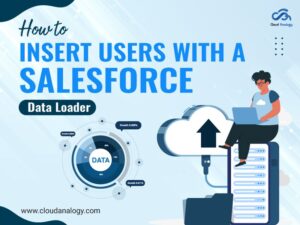Sharing is caring!
Undeniably, businesses worldwide depend on leveraging data insights to a great extent to make informed business decisions. Salesforce, a premier CRM platform, is widely used by organizations to manage sales, customer interactions, and analytics. On the other hand, Microsoft’s Power BI is a powerful business analytics tool that offers an excellent option for visualizing & analyzing your business data in a single location. Besides connecting with various services, it also connects with Salesforce.
Integrating the powerful tools -Salesforce and Power BI- enables businesses to enhance their business intelligence capabilities and gain deeper, valuable insights into customer behavior, sales trends, and overall performance.
In this blog, we will walk you through the step-by-step process of integrating Salesforce with Power BI to unlock the full potential of your data. Whether you’re a seasoned data analyst or a business leader looking to harness the power of data analytics, this blog will help you understand the ins and outs of the integration you need to succeed in today’s data-driven world.
Table of Contents
- Power BI & Salesforce Overview
- Benefits of integrating Power BI with Salesforce
- Steps to Integrate Power BI with Salesforce
Before diving into the integration process, let’s first discover the fundamentals of Salesforce and Power BI.
Salesforce: Salesforce is the #1 customer relationship management (CRM) platform. It empowers businesses to manage sales, marketing, customer service, and more all in one place. With features like lead management, opportunity tracking, and customizable dashboards, Salesforce helps organizations streamline their sales processes and drive growth.
Power BI: Power BI is a powerful business analytics tool developed by Microsoft that enables users to visualize, analyze, & process data from various sources. With Power BI, users can create interactive reports and dashboards, perform advanced analytics, and share insights with colleagues. It comes up with an intuitive interface and extensive features, making it a perfect choice for businesses looking to make data-driven decisions.
“Power BI is a business analytics solution that allows you to visualize your data and share insights across your organization, or embed them in your app or website,” according to Microsoft.
Benefits of Salesforce Integration With Power BI
1. Unified Analytics: You can consolidate data from Salesforce with other sources to gain a comprehensive view of your business operations.
2. Upgraded Visualization: With Power BI’s advanced visualization functionalities, you can create engaging & interactive dashboards and reports, enabling intuitive data exploration.
3. Real-time Insights: You can access up-to-date Salesforce data in Power BI for real-time analytics, facilitating quicker decision-making
4. Predictive Analytics: By combining Salesforce data with advanced analytics tools in Power BI, you can uncover predictive insights and forecast future trends.
5. Improved Sales Performance: Analyzing Salesforce data can help you identify sales trends, track performance metrics, and optimize sales strategies for improved outcomes.
Steps to Integrate Power BI with Salesforce
- Integrating Power BI with Salesforce
1.1 Power BI Connect to Salesforce Object
Step 1: Open Power BI > Get Data > More
Step 2: Click on “Online Services”> Salesforce Objects, then click on Connect.
Step 3: Select either the Production or Custom checkbox. If you choose the “Custom” checkbox, you must enter the URL of a custom instance. Check the Include relationship columns box to bring the relationships between objects into Power BI.
The Production URL is selected by default. To sign in, choose Custom and enter a custom URL. It could be the domain you’ve set up in Salesforce, such as:
“https://company.salesforce.com”.
Step 4: Click the Sign in button to Enter your Salesforce account. A window will then appear in which you can enter your login information. After successfully signing in, click Connect.
Step 5: Select one or more objects to load in the Navigator window. Then, click Load to load the data. Alternatively, to apply any transformations before loading the data, click the “Transform Data” button.
1.2 Power BI Connect to Salesforce Report
Connecting to a Report is the same as connecting to an Object; however, some steps are slightly different.
Notably, Salesforce restricts the Salesforce Reports connector, which can only retrieve 2000 rows.
However, using the Salesforce Objects connector, you can retrieve all the rows and recreate the reports you want from scratch. This way, you can ensure access to all the data you need to make informed business decisions.
Next, to connect to a Salesforce Report, follow the steps below:
Step 1: Select Get Data > Select More… from the dropdown list that appears.
Step 2: Select Online Services from the left pane. Then, on the right, select Salesforce Reports
and click Connect.
Conclusion
Integrating Salesforce with Power BI offers a powerful solution for analyzing and visualizing your Salesforce data. This enables you to unlock new insights and drive informed decision-making. By following the steps in this blog, you can make the most of your data and take your business analytics to the next level.
Need expert guidance or assistance with CRM development, implementation, data migration, & integration with third-party tools? Contact Cloud Analogy – the globally recognized Salesforce integration company with certified CRM experts who can help you with all things CRM, resulting in improving your business ROI and bottom line like never before.

Sachin Arora
Scrum Master and Principal Solutions Architect
Sachin, a renowned Scrum Master and Principal Solutions Architect at Cloud Analogy, has rich experience when it comes to working on process improvement in a fast-paced environment maintaining high level of quality in all deliverables. Sachin's expertise lies in varied hardware and software environments including Cloud technologies such as Salesforce, AWS, Cloud Foundry & Google App Engine and Mobile.Hire the best Salesforce Development Company. Choose certified Salesforce Developers from Cloud Analogy now.







